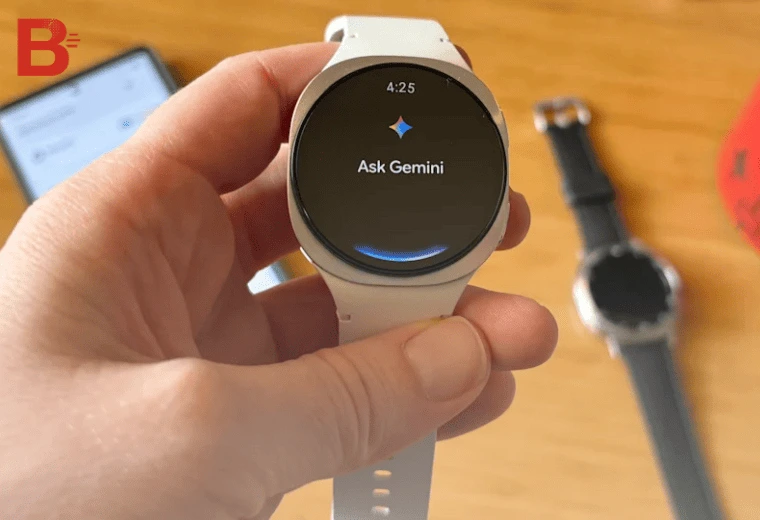How to Build a Website in 2025 AKA: Why You’re Not Rich Yet (and How to Fix It)
Let’s keep it 100: if becoming a millionaire was just about “working hard,” your Uber driver, your barista, and your overworked coworker would all be rich by now.
But they’re not. And neither are most people grinding 9–5 every day.
Why?
Because there’s a performance gap — the space between where you are right now and where you want to be. It’s not just about income or effort. It’s about the difference between action and aligned action.
Think of it like this:
- Where you are now: You might be hustling, spinning your wheels, watching endless YouTube videos, “planning” to start your business, investing $50 in crypto, or stuck in analysis paralysis.
- Where you want to be: Financially free, waking up when you want, helping your family, traveling, having 100% ownership of your time and energy.
In between? That gap. And it doesn’t close with motivation. It closes with structure and intentional leverage.
What Keeps the Gap Wide Open
How to Build a Website in 2025
Most people stay stuck because they:
Try 10 things at once with no real strategy
Focus on random tactics (instead of building systems)
Think they need to be “talented,” “special,” or “lucky” to win
Don’t track their energy, time, or ROI of their habits
Quit when results aren’t instant
Newsflash: no one’s coming to close that gap for you. No mentor, no course, no YouTube guru can hand you a million-dollar life. But the good news? You can build it — even without talent, luck, or genius.
All you need is clarity, consistency, and a simple system that multiplies.
The Boring Truth of the “Overnight” Millionaire
Almost every “overnight success” story is just a highlight reel of someone who:
- Found their lane (service, product, or platform)
- Showed up consistently for 1–2 years
- Improved 1% daily while the world was busy scrolling
- Used compounding (money, skills, attention, automation) to scale
That’s it.
No trust fund. No genius IQ. Just direction > speed.
“You’re not stuck because you’re dumb — you’re stuck because you don’t have a proven process yet.”
And that’s what this guide is about: helping you go from zero to momentum, from confused to clear, and from “stuck” to stacking real wealth — step by step.
In the next chapter, I’ll break down exactly why most people never make it (even when they start with good intentions)… and how you can escape that cycle permanently.
Ready to bridge the gap? Let’s go.
2. Why Most People Never Make It (and How to Escape That Fate)
How to Build a Website in 2025
Let’s break the cycle — permanently.
Look, most people don’t fail because they’re lazy. They fail because they’re busy doing the wrong things.
They’re watching “how to get rich quick” TikToks… bouncing between crypto, dropshipping, and ChatGPT side hustles… starting five businesses and finishing none.
And after six months of chaos? They give up, go back to Netflix, and convince themselves that success is just for the lucky few.
That’s not failure. That’s exhaustion disguised as quitting.
The 3 Invisible Loops That Keep You Broke
Let’s call them out:
1. The Learning Loop
You’re stuck in YouTube University. You’re consuming 10 hours of content a week… but creating zero results.
You’ve watched 37 productivity videos but still wake up scrolling Instagram.
You’ve saved 14 side hustle tutorials… but haven’t launched anything.
That’s because information ≠ transformation.
Learning only works if it’s tied to execution. If not, it’s procrastination with better branding.
2. The Dabbling Loop
You try a little bit of everything.
A Shopify store here.
Some crypto there.
A low-effort Fiverr gig for $15.
But without going deep, you never build leverage, momentum, or mastery. You stay in beginner mode — forever.
Most broke entrepreneurs aren’t lazy. They’re just dabblers with shiny object syndrome.
3. The Perfection Loop
You want everything to be just right before you start.
- The logo isn’t perfect
- The landing page needs more tweaking
- You’re still “waiting on inspiration”
Here’s the truth: no one gets it right the first time. Waiting for perfect is just fear in disguise.
If you’re in one of these loops (or all three), it’s time to escape. Not tomorrow. Today.
The Escape Plan: Burn the Loops, Build the Ladder
Success comes down to doing a few boring things really well, repeatedly.
Here’s what actually works:
- Pick one income vehicle (freelance skill, content brand, product, AI offer, whatever — we’ll explore them all later).
- Simplify your life to execute like a machine.
- Track your energy and focus like a mad scientist.
- Automate anything that doesn’t need your brain.
- Stick to one path for 6–12 months — minimum.
You don’t need a hundred tactics. You need one path, walked with consistency and clarity.
“If you want to live like most people can’t, you have to do what most people won’t: stay focused long enough to win.”
That’s it.
In the next chapter, I’ll help you find the perfect vehicle for YOU — something that fits your skills, energy, and time.
Because making money gets way easier once you stop guessing and start building around your strengths.
Onward.
Chapter 3: Find Your Value Zone (Not Just Your Passion)
How to Build a Website in 2025
Alright, let’s kill a myth real quick.
You’ve probably heard that old chestnut: “Just follow your passion and the money will follow.”
Yeah… no. That’s how you end up broke and frustrated, wondering why no one wants to pay you to hike mountains, nap, or paint watercolors of sad raccoons.
Here’s the truth: passion is part of the equation—but only part.
The real key to becoming a millionaire? Finding your Value Zone.
The Value Zone = Passion × Skill × Demand
Imagine a Venn diagram with 3 circles:
- Things You Love Doing
- Things You’re Actually Good At
- Things People Will Pay Serious Money For
Right in the middle, where those three overlap? That’s your Value Zone—the sweet spot where passion, competence, and market demand collide.
Let’s break each one down:
What You Love Doing
This one’s easy. What could you do all day and forget to eat? What makes you lose track of time?
For me, it was building and flying model helicopters, tinkering with little engines and designing cool stuff. I was obsessed. You’ve got something like that too—maybe it’s coding, gaming, writing, cooking, selling, organizing chaos, whatever.
Write that down.
What You’re Good At
Not “perfect.” Not “world-class.” Just better than most. Can you explain complex stuff clearly? Can you make things beautiful? Can you sell ice to a penguin?
List out your natural strengths—even if they don’t feel like “skills” yet. If friends always come to you for help with resumes or party planning, that counts.
What People Will Pay For
This is where most people mess up. They get so caught up in what they want to do, they forget to check if anyone wants to buy.
Google is your friend here. Ask:
- Are businesses already paying for this?
- Are people searching for this on YouTube or TikTok?
- Do freelancers offer this on Fiverr, Upwork, or LinkedIn?
Because if money isn’t already flowing, it’s gonna be much harder to carve out space.
Why Most People Stay Broke (Even When They’re Talented)
Here’s the trap: people usually live in just one or two circles.
- Passion-only? You’re the starving artist. Broke, bitter, and posting “Support my Patreon” links.
- Skill-only? You’re the overworked, underpaid technician who hates what you do.
- Money-only? You’re selling your soul for a paycheck, dreading Mondays, counting down to retirement.
None of those paths lead to freedom.
But if you hit the middle—your Value Zone—you can build a business you actually like, that you’re good at, and that makes bank.
How I Found My Value Zone (And Made My First $100K)
When I was broke, jobless, and had zero qualifications, I didn’t try to become the next Elon or Zuckerberg.
Instead, I asked:
- What do I love? → Building and flying model helicopters.
- What am I good at? → Tinkering, fixing stuff, and explaining how things work.
- What will people pay for? → RC kits, repairs, and custom designs.
Boom. That became my first real business. I opened model shops, designed custom kits, and scaled it into a global brand. Not because I was a genius—but because I understood the Value Zone.
You can do the same.
Chapter 4: Pick Your Money-Making Vehicle (That Matches Your Lazy Genius Level)
How to Build a Website in 2025
Let’s be real: becoming a millionaire isn’t just about working hard. It’s about working smart — and picking the right vehicle to get you from Point A (where you are now) to Point B (seven-figures and financial freedom).
Here’s what nobody tells you:
Your money-making method matters just as much as your mindset.
You don’t need to do everything. You just need to choose the right income vehicle that fits your current energy, skills, and level of laziness — and then stick with it long enough to see results.
First, Understand This: You Need Two Vehicles
If you want to be wealthy, you need to make money AND multiply money. That means two vehicles:
- Active Vehicle = the thing you do to generate cash (freelance, agency, online store, etc.)
- Passive Vehicle = the thing you use to grow that cash over time (investing, real estate, compound interest, etc.)
Let’s start with the active one.
Step 1: Pick the Right Active Vehicle (For Your Stage)
Think of your active income stream like a motorbike. You control the speed. It’s agile. You can start with almost nothing and build momentum fast.
But here’s where most people mess up: they pick the wrong bike.
The right vehicle should match your current skillset, passion zone, and laziness level.
Let’s break it down:
If you’re brainy but broke:
Go for freelance consulting in something high-value:
→ Think: copywriting, media buying, AI automation setups, UGC scripting.
You can charge $1,000+ per client, work remotely, and scale to an agency later.
If you’re creative and kinda lazy:
Go for content creation + affiliate marketing.
→ Think: faceless YouTube, TikTok automation, Instagram carousels with digital products.
Use ChatGPT to script. Use AI to post. Use automation to collect $$$ while you nap.
If you’re techy but introverted:
Try Shopify dropshipping with AI product research or print-on-demand.
→ Bonus: bundle with email flows + influencer UGC.
This works while you sleep if set up right (and yes, it takes work upfront — but it’s the lazy rich path long-term).
If you’re hustler-minded with no skills yet:
Go for service arbitrage.
→ Sell services (like video editing or website design) on Fiverr/Upwork using AI + contractors to fulfill.
Zero skills required. You’re just the middleman with good vibes and a Stripe account.
My Favorite “Lazy Millionaire” Starter:
Service-Based Business using skills inside your Value Zone (remember Chapter 3?).
→ Low startup cost, fast to cash, scalable with VAs or automation.
Examples: Notion templates, AI prompt engineering, backend systems setup, podcast repurposing, etc.
Step 2: Set Up Your Passive Vehicle (Even If You’re Broke)
Now let’s bolt on the sidecar — your investing plan.
This is where your long-term wealth builds in the background.
You don’t need to be Warren Buffett. You just need a system.
Lazy Wealth Hack: Automate $5–$20/day into something like the S&P 500 and leave it alone.
If you’re in the UK or Europe, use Trading 212 or EToro.
If you’re in the US, use M1 Finance, Fidelity, or Robinhood.
Start with this simple lazy setup:
- Invest $5–10/day into an S&P 500 ETF (e.g. VOO or SPY)
- Turn on auto-invest
- Ignore your account for 10 years
It’s not sexy. It’s not fast. But it’s how lazy people quietly become multi-millionaires by 40.
The Most Important Rule: Don’t Mix Vehicles Too Early
Trying to ride a motorbike and fly a plane and paddle a canoe at the same time?
That’s what most people do when they chase 5 side hustles at once.
Pick ONE income vehicle, go hard for 12 months, and only then add more.
Obsessive focus beats scattered hustle every single time.
Summary (Because You’re Probably Multitasking):
You need two money vehicles — one to earn, one to invest
Match your income stream to your value zone and lazy genius level
Automate investing even if it’s just $5/day
Focus on ONE thing at a time
Get rich slow → then get rich fast
5. Automate the Boring Stuff (So You Can Focus on the Fun Stuff)
How to Build a Website in 2025
Imagine making money while you sleep, travel, or play video games.
That’s not magic. It’s automation.
If you’re serious about hitting your first million, you’ve got to stop doing everything manually and start building systems that work for you — 24/7.
Here’s the harsh truth:
Most people stay broke because they waste their time doing $5/hour tasks a robot could do.
Successful people? They build machines that generate income even when they’re offline.
What You Should Automate First
Before you go crazy with Zapier and start wiring everything like a maniac, focus on these 4 key areas first:
1. Lead Generation
Let AI do the dirty work for you. Tools like Apollo.io, Instantly, and Clay can automatically find leads on LinkedIn, extract emails, and even send personalized outreach — no manual hustle needed.
2. Content Creation
Generate scripts, shorts, tweets, and even long-form blog posts (like this one) using GPT-4, Sora, and OpusClip.
Pro tip: Use pre-made viral prompts + schedule everything in tools like Publer or Metricool to build content engines that run on autopilot.
3. Customer Onboarding & Service
Automate your entire client process with tools like Notion, Zapier, Calendly, and Stripe.
Want to handle FAQs without lifting a finger?
Set up an AI chatbot with Manychat + ChatGPT to handle 80% of customer questions — hands-free.
4. Payments & Follow-ups
Automate your upsells, follow-ups, and payment sequences using ConvertKit, Flowtrack, or Systeme.io.
Lazy hack: Systeme.io is an all-in-one beast — funnel builder, CRM, email, checkout… all without code.
The “Lazy Millionaire Stack” (2025 Edition)
Here’s a simple, affordable, and powerful automation stack for anyone building faceless online income:
| Function | Toolset | What It Does |
|---|---|---|
| Copywriting | ChatGPT + Jasper | Writes sales pages, emails, and scripts for you |
| Video Editing | OpusClip + CapCut | Turns long videos into viral shorts automatically |
| CRM + Email Marketing | Flowtrack / Systeme.io | Manages funnels, lists, emails, websites |
| Chatbot & Support | Manychat + GPT | Replies to customers on WhatsApp, Instagram, etc. |
| Scheduling + Payments | Calendly + Stripe | Books appointments and collects payments |
| Task & Client Management | Notion + AI Templates | Centralizes systems and workflows |
| Landing Page Builder | Framer / Systeme.io | Builds no-code, AI-assisted websites and funnels |
Automate Your Thinking (Yes, Really)
Even your daily decisions can (and should) be automated.
That’s what Naval Ravikant calls “mental models.” It’s about reducing decision fatigue and freeing up brainpower for high-leverage moves.
Here’s how:
- Use scripts for everything — onboarding, sales, emails, content
- Have go-to templates for offers, funnels, lead gen
- Outsource small decisions to AI — let ChatGPT plan, brainstorm, and organize your day
More systems = less stress = more freedom.
Real-Life Example: From $2K to $20K/Month with 1 Funnel + Automations
I launched a simple funnel copywriting service for online coaches and info creators.
Here’s what I used:
- A one-page landing site built on Carrd
- Calendly to automate client bookings
- Zapier to connect everything to Notion + Google Drive
- ChatGPT to co-write copy + deliverables
- Flowtrack to handle emails, upsells, and follow-ups
Within 30 days, I had closed over $20K in deals, and 80% of the process was automated.
I only showed up for the delivery.
No Zoom calls. No cold DMs. No burnout.
Warning: Don’t Automate What You Don’t Understand
A rookie mistake?
Trying to automate a funnel before you’ve even validated your offer.
Here’s the golden rule:
Manual first → System later.
Test it manually →
Refine the process →
Document what works →
Then automate the heck out of it.
You can’t scale a system that doesn’t convert. So don’t skip the human phase.
Recap: Your Lazy Automation Checklist
Did you find your “Value Zone”?
Did you pick your money-making vehicle (product, service, or content)?
Did you build a passive income engine with investments?
Now: automate the repetitive stuff.
This is how lazy millionaires buy back their time — and build wealth without sacrificing their sanity.
Chapter 6: The Rule of 1-1-1 to Hit Your First Million (and Stay Sane)
How to Build a Website in 2025
Let’s face it: most people trying to “get rich” make it way harder than it needs to be.
They jump from idea to idea. One week it’s dropshipping. Next week, it’s day trading. Then it’s crypto, a newsletter, a ghost kitchen, and oh — maybe an Airbnb side hustle on the side.
Sound familiar?
This spaghetti-on-the-wall strategy burns people out. It kills momentum. Worst of all? It wastes your most valuable resource: focus.
That’s why the smartest lazy millionaires I know follow one simple principle:
The Rule of 1-1-1
1 Offer. 1 Audience. 1 Channel.
That’s it. That’s the whole million-dollar formula.
It might sound too simple — even boring. But here’s the truth: boring is scalable. Boring is repeatable. Boring pays your bills while you sleep.
Let’s break it down:
One Offer
Pick one offer that solves a painful, expensive, or urgent problem.
Forget trying to serve everyone. Focus on one thing that delivers clear value. That could be:
- A service (like funnel copywriting, podcast editing, or AI automation)
- A product (like a Notion template, online course, or eBook)
- A performance-based deal (like helping a business get leads or close clients — and getting paid per result)
Don’t complicate it. Make one irresistible offer. Refine it. Improve it. Automate it.
Lazy millionaire tip: The less moving parts, the better. Keep it digital. Keep it high-margin. Keep it lean.
One Audience
Now aim that offer at one type of person.
Not “entrepreneurs.” That’s too vague.
Be laser specific:
- Coaches doing $10k/month who want better sales systems
- Local realtors struggling to get leads
- Busy 9–5ers who want to build passive income on the side
You want to create the feeling that your offer was custom-made for them. That’s when you become irresistible.
Lazy millionaire tip: A narrow audience makes marketing 10x easier. You instantly stand out because you’re not speaking to everyone — just the right ones.
One Channel
Here’s where most people mess up.
They try to be everywhere: TikTok, Instagram, LinkedIn, YouTube, Substack, Twitter… and end up making noise instead of money.
Pick one main channel where your audience hangs out — and master it.
Examples:
- If your dream clients are founders → try LinkedIn or cold email.
- If they’re creators or solopreneurs → go hard on Twitter/X.
- If they’re everyday people hungry for info → TikTok or YouTube Shorts.
Build one repeatable system on that channel — whether it’s a content funnel, outreach system, or DMs. Make it work. Then automate it. Then scale.
Real-Life Example: How “One Funnel” Took Me from $0 to $20K/Month
Let me show you how I used the Rule of 1-1-1 in real life.
- 1 Offer: I wrote AI-enhanced email funnels for info creators.
- 1 Audience: Course creators and coaches making $10K–$50K/month.
- 1 Channel: Cold outreach using Instantly + Clay + Notion.
That’s it. No TikTok. No YouTube. No fluff.
I built one automated system to find leads, qualify them, and book sales calls. And because the offer solved a clear problem (low-converting funnels), they were happy to pay.
In 30 days, I had $20K in deals. And I wasn’t burned out. I had time to go to the gym, hang with friends, even take weekends off. That’s the power of this rule.
Why This Rule Keeps You Sane
Here’s the underrated benefit of the 1-1-1 Rule:
You stay focused, clear, and calm.
Instead of waking up thinking, “What should I work on today?” — you already know.
Instead of chasing shiny objects, you’re doubling down on what’s already working.
Instead of burning out trying to juggle 10 projects… you scale one thing that actually makes money.
This isn’t just about hitting $10K/month. It’s about doing it without sacrificing your freedom, health, or peace of mind.
When to Break the Rule
Yes, eventually you can expand:
- Add new offers (after your first one is systematized)
- Explore new audiences (once you’ve maxed your current niche)
- Test new channels (after dominating one)
But not on Day 1.
Don’t scale noise. Scale what works.
Action Step: Your 1-1-1 Plan
Take 10 minutes and write this down:
- 1 Offer I will commit to:
- 1 Audience I want to serve:
- 1 Channel I’ll dominate:
Tape it to your wall. Read it every morning. Ignore everything else.
Do that for 90 days and tell me it doesn’t change your life.
Chapter 7: Real Examples of Lazy Millionaires (and What You Can Steal From Them)
How to Build a Website in 2025
Forget the grind-hustle-repeat narrative.
Some people got rich not by working harder — but by working smarter. Smarter systems. Smarter delegation. Smarter tools. And sometimes… just straight-up lazy genius moves.
In this chapter, we’re breaking down real-life examples of people who cracked the millionaire code without burning out, pulling 18-hour days, or trying to be the next Elon Musk.
These are your blueprints. Your cheat codes. Your lazy-yet-lethal money-making templates.
Let’s unpack them, one millionaire at a time.
1. The Faceless YouTube Creator Who Pulls $40K/Month with Zero On-Camera Time
Let’s start with a lazy legend: the faceless YouTuber.
He goes by a channel name — not his real name. He doesn’t appear on camera. He doesn’t do voiceovers. He barely writes scripts anymore.
His setup:
- Uses ChatGPT + VidIQ to research viral video topics
- Has GPT-4 write the scripts
- Sends them to voice actors on Fiverr
- Uses Pictory or RunwayML to generate videos
- Uploads to YouTube with click-worthy thumbnails made on Canva
- Automates publishing with Metricool
- Monetizes via YouTube Ads + affiliate links in every description
Result?
He scaled to $40K/month in 16 months. All faceless. All outsourced. All automated.
Lazy millionaire move to steal:
Start a niche YouTube channel without showing your face. Focus on repeatable systems, not creativity. Let AI + templates + freelancers do 90% of the work.
2. The Guy Who Built a $2M Business from Reddit Comments
Yes, Reddit.
This guy noticed that people in subreddits like r/Entrepreneur and r/Fitness were constantly asking the same questions.
He started replying with helpful tips, then linking to a Notion page with more resources.
That Notion page evolved into a $29 digital product. Then a $79 video course. Then a $299 coaching group.
He never built a real website. He never ran paid ads. No huge following. Just solving problems in the comments.
Result?
Over $2M in total revenue in 3 years.
Lazy millionaire move to steal:
Hang out where your audience hangs out (Reddit, Discord, FB groups), and turn high-quality replies into assets. One smart comment thread can seed an entire product.
3. The Airbnb Arbitrage Duo Who Don’t Own a Single Property
These two friends weren’t rich. They didn’t buy real estate.
Instead, they used Airbnb rental arbitrage:
- They leased nice apartments in big cities.
- Furnished them cheaply but beautifully.
- Listed them on Airbnb for 3x the rent price.
- Hired a VA to manage communication and cleaning.
They scaled from 1 to 10 units in 14 months and now pull $25K/month in net profit.
They literally don’t own anything. No mortgages. No home repairs. No landlords breathing down their necks.
Lazy millionaire move to steal:
Use leverage (like subleasing or software) instead of ownership. Arbitrage models are perfect for lazy entrepreneurs — fast to set up, easy to automate.
4. The Guy Who Sells AI-Generated Notion Templates for $79/Pop
He’s not a developer. He’s not a designer. He just figured out how to build beautiful, useful Notion templates using ChatGPT and AI icons.
He built templates for:
- Freelancers
- Creators
- Students
- Coaches
He sells them through Gumroad and markets them on Twitter/X and Pinterest using scheduled content.
He’s earned over $300K in 18 months.
He now spends 2 hours/week updating links and automating newsletter drops.
Lazy millionaire move to steal:
Turn your workflows into templates. Use AI to create tools, not just content. Bundle and sell repeatable solutions.
5. The Creator Who Makes $10K/Month Just Repackaging Tweets into Ebooks
One guy had 40,000 followers on Twitter. Nothing massive. But his threads on money and productivity went viral often.
Instead of letting them die, he compiled the best ones into a clean PDF ebook using Canva and sold it for $19.
He then:
- Offered it in bundles
- Added bonuses like swipe files and scripts
- Used Gumroad’s affiliate program to let others promote it
Now? He pulls $10K/month from 3 ebooks — all content he already wrote for free.
Lazy millionaire move to steal:
Never let good content die. Recycle tweets, blogs, and posts into paid products. Your free content can become your best-selling assets.
6. The $30K/Month Gumroad Seller Who Doesn’t Touch Social Media
This creator sells AI-powered writing tools on Gumroad. He doesn’t have TikTok. Doesn’t run ads. Doesn’t even post on Twitter.
His only traffic source? SEO + Product Hunt launches.
He:
- Used ChatGPT to generate SEO blogs
- Created smart landing pages with Framer
- Ranks on Google for “AI resume generator” and “cold email tool”
- Drops new products every 2–3 months
Each product solves a specific pain (like “write a viral tweet” or “generate client proposals fast”).
He runs it all solo and spends 4 hours/week on maintenance.
Lazy millionaire move to steal:
Use tools (AI, Framer, Gumroad, SEO) to build income machines that don’t require posting every day. Quiet execution > constant exposure.
7. The Coach Who Turned Loom Videos Into a $200K Course
This one’s simple but smart.
She’s a freelance designer. Every time a client asked a question, she recorded a Loom video explaining the answer.
After 3 months, she had:
- 40 Looms
- 10 design templates
- A Trello board with client workflows
She bundled it into a “Starter Kit for Freelancers” and started selling it at $129.
Within 6 months, it generated over $200K — mostly through word-of-mouth and a few Twitter threads.
She still freelances… but now from a place of abundance.
Lazy millionaire move to steal:
Document what you already do. Turn your day-to-day into products. Every client interaction is a potential asset.
8. The Lazy Funnel Guy Who Sells AI Copy Systems While Sleeping
This one hits close to home — it’s me.
I created a funnel-copywriting offer for creators and course sellers. Used:
- A landing page built on Carrd
- A booking system with Calendly
- Zapier to sync everything with Notion
- ChatGPT to help with scripts
- Flowtrack for upsell emails
I booked over $20K in clients in 30 days, and 80% of the funnel was automated.
The only part that required me? Delivering the work. (Which, by the way, was also 60% AI-assisted.)
Lazy millionaire move to steal:
If you offer a service, build a funnel that sells it for you — and use AI to deliver faster than humanly possible.
The Patterns: What All These Lazy Millionaires Have in Common
How to Build a Website in 2025
Let’s zoom out.
These examples might seem wildly different, but they share key principles:
1. They don’t trade time for money forever.
They start active (doing the thing manually), but they quickly turn it into systems, templates, or products.
2. They leverage AI and automation early.
Most use AI not just for speed, but scale. They don’t just write faster — they build tools, launch funnels, and automate entire businesses.
3. They stay faceless, low-risk, and low overhead.
No offices. No big teams. No flashy brands. Just lean, quiet machines making money in the background.
4. They reuse and recycle like pros.
A tweet becomes a thread becomes an ebook becomes a course becomes a newsletter. Nothing gets wasted.
5. They stack simple systems.
No one’s trying to build a billion-dollar app. They just stack small wins:
- $9 ebook
- $79 template
- $299 funnel service
Multiply by 100s or 1000s of people, and you’re printing cash.
What You Can Do This Week (Lazy Millionaire Starter Checklist)
Here’s how to take action — without burning out:
Pick your “lazy lane”: content, product, service, or rental arbitrage
Build one asset: a template, funnel, landing page, or lead magnet
Set up simple automation: use AI + tools to handle 80% of the work
Post value once a day in one channel (Reddit, X, TikTok, etc.)
Document the process — your workflow could be a course
Start small. Get feedback. Improve. Then automate.
Final Word: Being Lazy Isn’t a Problem. Being Passive Is.
Let’s be clear: “lazy” doesn’t mean you do nothing.
It means you focus on the highest-leverage moves, build systems once, and let them work repeatedly.
The lazy millionaires you just met?
They work strategically, not constantly.
They build machines that print freedom.
And so can you.
Looking for one of these top-selling gadgets?
Support the blog and level up your tech by buying through our Amazon partner store — you pay the same price, AND you’re helping us create more content like this! Just click the link, choose your product:
Smartphones:
Notebooks:
Smartwatches:
Audio & Streaming:
Thanks so much for your support!




























